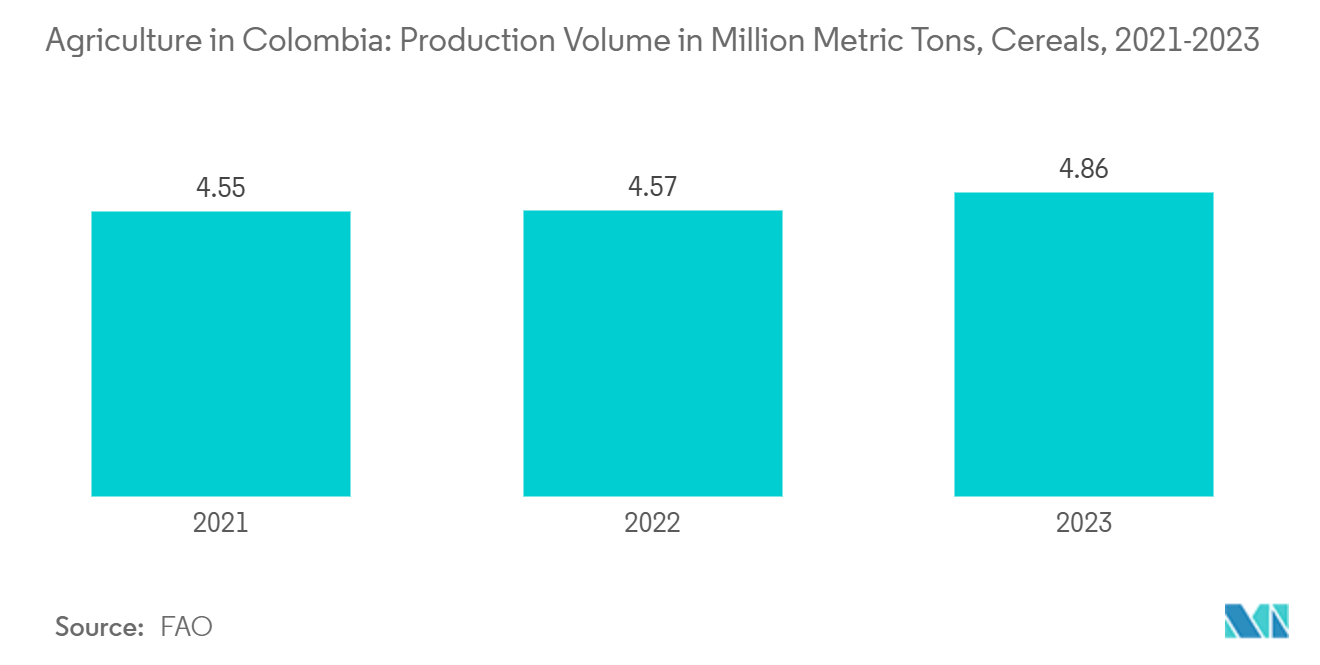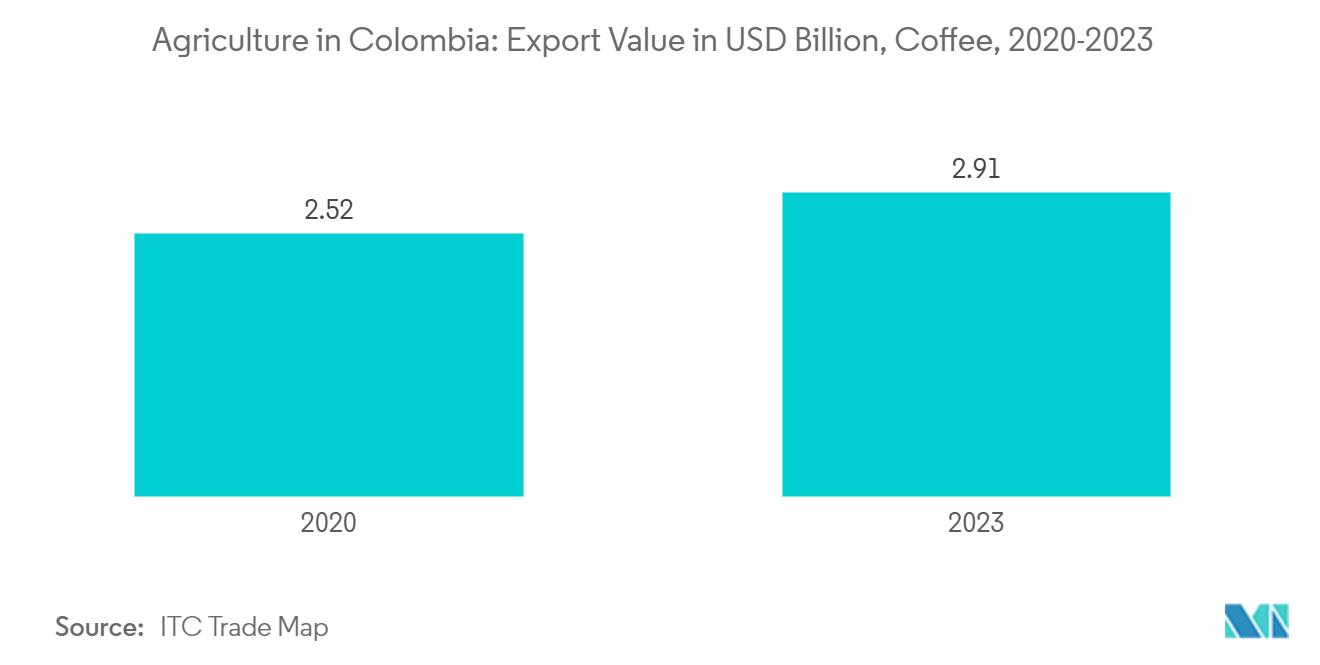Market Trends of Agriculture In Colombia
Cereals Dominate Agricultural Production in the Country
Cereals serve as important dietary supplements in Colombia, with their significance increasing in recent years. According to the United States Department of Agriculture (USDA), corn consumption rose from 7.9 million metric tons in 2022 to 8.1 million metric tons in 2023. This increase in demand is attributed to changing dietary habits, population growth, and food processing industry expansion. Additionally, corn constitutes nearly 60% of animal feed formulations in the country.
Climate change adaptation strategies have contributed to the rise of cereals in Colombia's agricultural market. With increasing frequency of extreme weather events, farmers have shifted towards more resilient crops. Rice, in particular, has seen significant growth. According to FAO Statistics, rice production reached 2.7 million metric tons in 2023. This growth was partly attributed to the introduction of new drought-resistant varieties, such as zinc rice, which achieves yields of over 5 metric tons per hectare.
International trade has played a significant role in the dominance of cereals in Colombia. While the country remains a net importer of cereals, particularly wheat and maize, efforts have been made to reduce import dependency. In 2023, cereal imports decreased by 17.8% compared to 2022, according to data from the ITC Trade Map Statistics. This reduction was achieved through increased domestic production and diversification of cereal crops.

High Growth Potential for Agricultural Exports
Colombia's agricultural economy is significantly influenced by coffee and banana crops. The country's tropical climate and varied altitudes support diverse agricultural production. Colombia's trade has historically been characterized by the export of raw materials and the import of intermediate and capital goods. In 2023, Colombia exported coffee valued at USD 2.9 billion, according to the ITC Trade Map. As the world's third-largest coffee producer, after Brazil and Vietnam, Colombia benefits from its extensive availability of certified coffee. This has enabled green coffee exporters to access international markets and segments while allowing Colombian roasters to source certified raw materials. Approximately 86% of Colombia's coffee is exported as green coffee, with the remainder processed and consumed locally.
Similarly, Colombia is the fourth-largest banana supplier in the Latin America and Caribbean (LAC) region, exported 1.8 million metric tons of bananas in 2023. The country's fruit sector demonstrates further expansion potential through increasing exports of exotic fruits like goldenberries, pitahaya, and tree tomatoes. Cacao and its derivatives are emerging as a sector with significant export potential. According to the USDA, cacao exports reached over 27,500 metric tons in 2023, with 68% comprising cocoa-derived products. Colombia's recognition as a producer of fine flavor cacao presents a substantial opportunity for export growth. Therefore, the growth potential of these export-oriented crops is expected to contribute to the market's expansion in the coming years.


